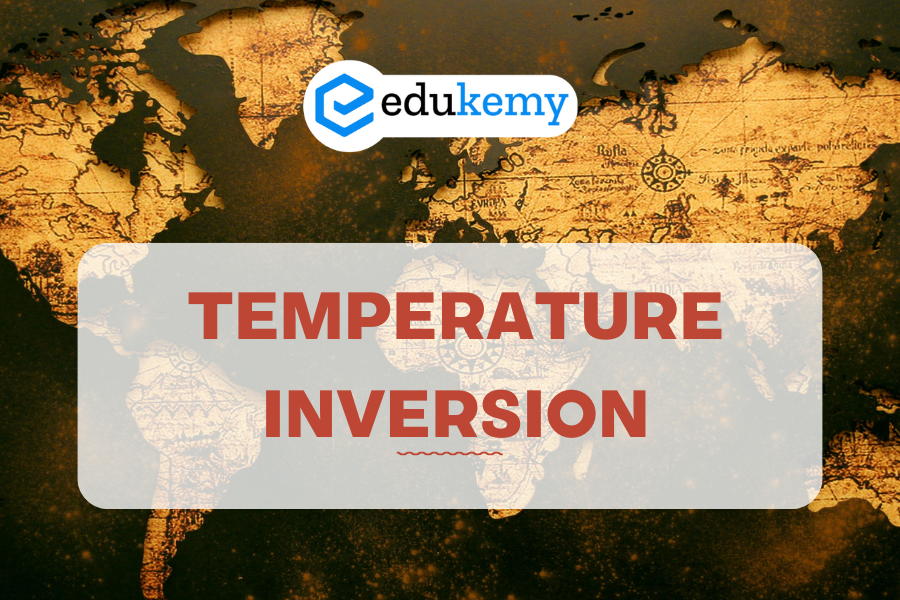Discover the causes, effects, and examples of Temperature Inversion. Learn its impact on air quality, weather, and agriculture with real-world case studies.

Contents
Introduction
Temperature inversion is a key concept in meteorology and physical geography. For students of Geography, especially those preparing for exams like the UPSC, understanding the causes, effects, and types of temperature inversions can provide a solid foundation for answering questions on atmospheric phenomena and climate dynamics. Let’s dive into this concept and break it down.
Check Shabbir Sir’s Class notes
Click here to download
Effects of Temperature Inversion
Temperature inversions have significant effects on weather patterns, environmental quality, and human health. Here are some of the key impacts:
- Air Quality Deterioration
- Inversions trap pollutants close to the ground, particularly in urban areas, where emissions from vehicles, factories, and other sources are concentrated. The lack of vertical air movement prevents these pollutants from dispersing, leading to smog and poor air quality, which can have severe health impacts.
- Impact on Precipitation and Cloud Formation
Inversions suppress cloud formation and precipitation, as they create a stable atmospheric layer. This effect can reduce rainfall, particularly in regions already prone to dryness.
- Frost Formation in Agriculture
Radiation inversion can lead to frost, which is detrimental to crops. In valleys or basins where cold air settles overnight, crops can be damaged by the freezing temperatures caused by surface cooling.
- Fog Formation
Inversions often trap moisture close to the ground, which, combined with stagnant air, can lead to dense fog formation. This fog can disrupt transportation and is common in valleys and coastal areas.
Examples and Case Studies
- The Great Smog of London (1952)
A classic example of the effects of temperature inversion is the Great Smog of London. A strong inversion layer trapped pollutants, leading to deadly air quality and visibility issues.
- New Delhi, India
New Delhi frequently experiences temperature inversions in winter, worsening the air quality. The cold air and low winds trap pollutants, creating a thick layer of smog that severely impacts residents’ health.
Conclusion
Temperature inversion is a fascinating atmospheric phenomenon with wide-ranging implications for weather, climate, and human health. Understanding the causes and effects of temperature inversions is essential for geography students, as it helps explain variations in weather patterns and pollution dynamics.
Check out the PYQs on this topic: Click here
To get free counseling/support on UPSC preparation from expert mentors please call 9773890604
- Join Geography Optional Course – Click Here
- Get Geography Hard Copy notes – Click Here

